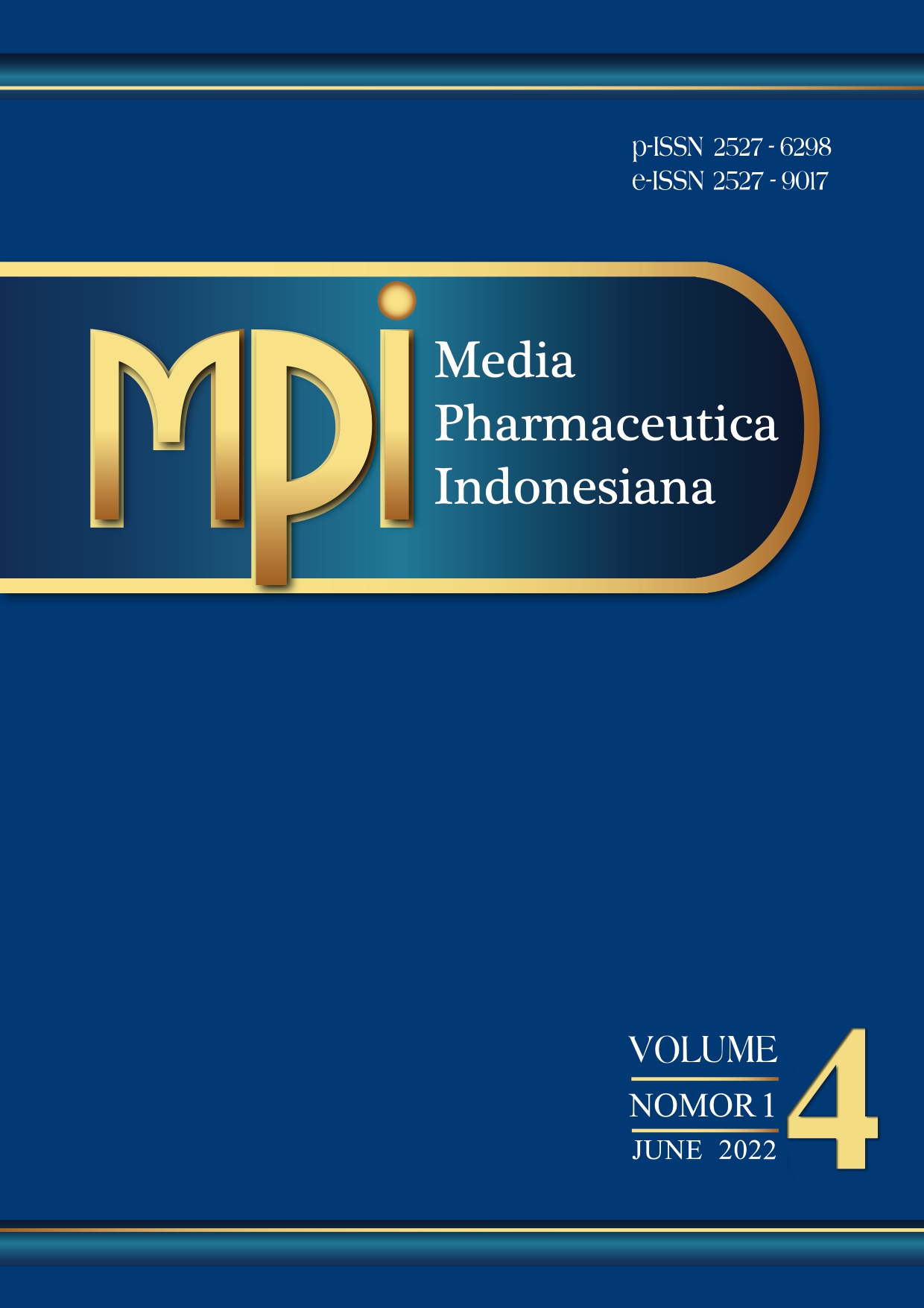Air Daun Sirih (Piper betle L.) Tidak Berpotensi Memicu Resistensi Sel Escherichia coli pada Dosis Pemakaian Secara Traditional
 Abstract Views:
466 times
Abstract Views:
466 times
 PDF Downloads:
281 times
PDF Downloads:
281 times
Abstract
Air rebusan daun sirih (Piper betle L.), disebut juga air sirih, telah lama digunakan masyarakat di Indonesia. Pemakaian air sirih secara terus-menerus menimbulkan kekhawatiran pada muculnya bakteri yang resisten, seperti pada kasus paparan bakteri dengan minyak pinus. Penelitian ini dilakukan untuk mengetahui potensi terjadinya perubahan kepekaan sel Escherichia coli setelah dipaparkan air sirih dengan kadar yang umum digunakan oleh masyarakat (5% b/v). Metode yang digunakan adalah dengan pemaparan sel E. coli dengan air sirih 5% b/v, mulai dari generasi 0 hingga generasi ke-130. Uji konfirmasi ada tidaknya perubahan kepekaan sel terhadap air sirih dilakukan dengan penentuan kadar hambat minimum dan hambatan pertumbuhan sel dengan metode difusi agar. Hasil penelitian menunjukkan bahwa sel pada generasi ke-0, 10, 40, 110, dan 130 tidak terhambat pertumbuhannya oleh air sirih walaupun densitas sel setelah terpapar air sirih dari generasi ke-0 hingga ke-130 cenderung mengalami penurunan. Zona hambatan pertumbuhan sel dari semua generasi terhadap antibiotik imipenem, ceftazidime, ciprofloxacin dan ampicilin juga tidak berbeda signifikan. Berdasarkan hasil penelitian dapat disimpulkan bahwa sel E. coli yang terpapar air sirih pada kadar pemakaian masyarakat tidak berubah kepekaannya terhadap air sirih dan beberapa antibiotika uji.
Downloads

This work is licensed under a Creative Commons Attribution-ShareAlike 4.0 International License.
Articles published in MPI are licensed under a Creative Commons Attribution-ShareAlike 4.0 International (CC BY-SA) license. You are free to copy, transform, or redistribute articles for any lawful purpose in any medium, provided you give appropriate credit to the original author(s) and MPI, link to the license, indicate if changes were made, and redistribute any derivative work under the same license.
Copyright on articles is retained by the respective author(s), without restrictions. A non-exclusive license is granted to MPI to publish the article and identify itself as its original publisher, along with the commercial right to include the article in a hardcopy issue for sale to libraries and individuals.
By publishing in MPI, authors grant any third party the right to use their article to the extent provided by the CC BY-SA license.

 DOI:
DOI:










